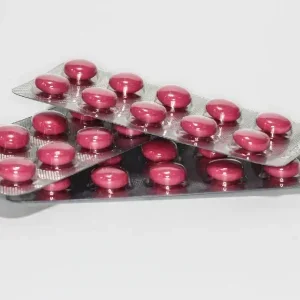
Takeda has received the US Food and Drug Administration (FDA) expanded approval for Gammagard Liquid ERC, a ready-to-use liquid immunoglobulin therapy with low immunoglobulin A (IgA) content.
Gammagard Liquid ERC with low IgA content of less than or equal to 2µg/mL in a 10% solution is already approved in the US, for chronic inflammatory demyelinating polyneuropathy (CIDP).
The expanded FDA approval indicates the liquid immunoglobulin therapy as a replacement therapy for individuals aged two years and older with primary immunodeficiency (PI).
Its ready-to-use formulation offers ease of administration, eliminating the need for reconstitution and allowing for both intravenous and subcutaneous delivery.
The feature reduce the administration burden on patients and healthcare providers.
Takeda will be the sole manufacturer of Gammagard Liquid ERC with low IgA content in a 10% solution, with plans to commercialise it in the US by 2026.
The company also plans to launch the immunoglobulin therapy in the European Union (EU) in 2027, where it is approved by the European Medicines Agency (EMA) as Deqsiga.
Takeda plasma-derived therapies business unit senior vice president and research and development head Kristina Allikmets said: “The approval of Gammagard Liquid ERC reinforces our commitment to supporting individualised treatment approaches for people with primary immunodeficiency.
“Gammagard Liquid ERC uses the same state-of-the-art manufacturing process as our other ready-to-use liquid immunoglobulin formulations and is aligned with our forward-looking strategy to prioritise reliable supply while offering a broad range of immunoglobulin therapies to address varied patient needs.”
Gammagard Liquid ERC is not specifically indicated for IgA sensitivity in PI patients. However, it may be considered an option based on clinical judgment.
The therapy is contraindicated for patients with a history of severe systemic hypersensitivity or anaphylactic reactions to the product.
Warnings include the potential for severe hypersensitivity reactions, even in patients who have previously tolerated immune globulin products, and risk of anaphylaxis.
Simultaneously, Takeda has announced the discontinuation of its first-generation low IgA product, Gammagard S/D, which has an IgA content of less than 1 µg/mL in a 5% solution.
The Japanese drugmaker said the older manufacturing process for Gammagard S/D is no longer sustainable for future patient needs.
Its production will be ceased by the end of December 2027, with existing inventory maintained until depletion or expiration.
Allikmets added: “We understand the impact that this news may have on patients who currently rely on GAMMAGARD S/D for their treatment.
“We are communicating this information now to allow time for patients to work closely with their health care teams to develop alternative treatment plans.”






